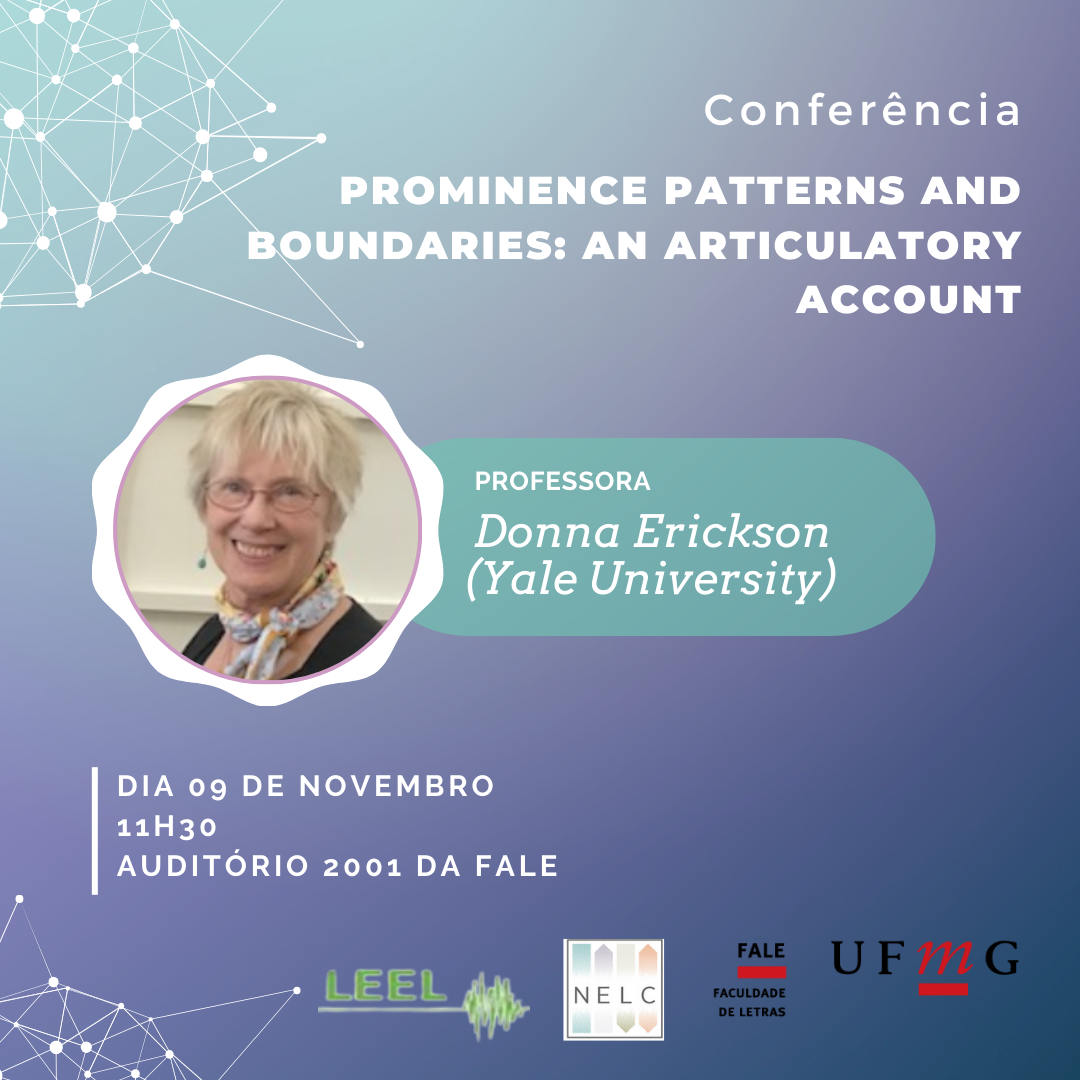O LEEL - Laboratório de Estudos Empíricos e Experimentais da Linguagem - e o NELC - Núcleo de Estudos em Linguagem, Cognição e Cultura - convidam a todos(as) para a conferência "Prominence Patterns and Boundaries: an articulatory account", a ser proferida pela Prof.ª Donna Erickson (Haskins Laboratories, Yale University).
O evento acontecerá no dia 09 de novembro, às 11h30, no Auditório 2001 da Faculdade de Letras da UFMG (2º andar).

Resumo
From an articulatory point of view, a spoken utterance consists of a series of openings and closings of the mouth. Generally, these opening-closings (aka syllables) are grouped into several sub-units within the utterance, which we loosely refer to as phrases. In so-called edge strengthening languages, such as French, Mandarin and Japanese, the amount the mouth (jaw) opens in the vertical direction increases on the last syllable of each phrase, as well as sometimes, on the first syllable of each phrase. This increase in jaw displacement is often referred to as phrasal stress. For languages like English, there is some flexibility as to which syllable gets the most mouth opening; however, within each phrase unit, there will be one syllable which has the most mouth opening (stress). Thus, for a two-syllable phrase, the mouth opens more for either the first or the second syllable, and first language speakers of English intuitively know which of the two syllables get most jaw opening (most stress), (but second language learners of English often do not). For instance, the phrase five bright highlights, which consists of two 2-syllable feet, will be uttered such that the first member of each foot will get more jaw opening (stress) with the first member of the last foot getting the most jaw opening (stress) in the phrase. For read speech utterances, generally there will be one syllable in the entire utterance that has the most jaw opening, and this syllable is said to be the nuclear stress syllable. Also, in read speech, the size of a phrase boundary tends to be commensurate with the size of the phrase unit, such that small phrase units are demarcated by small boundaries, while large phrase units by large boundaries. Some ongoing work suggests that boundary size can be derived from the amount of jaw displacement together with information about the segmental articulation of the syllable onset-coda (Fujimura 2000, Erickson et al. 2015). The articulatory patterns of varying amounts of jaw opening (stress) together with phrase boundary sizes provide a window into understanding the metrical hierarchical structure of the utterance.
Para mais informações, envie e-mails para O endereço de e-mail address está sendo protegido de spambots. Você precisa ativar o JavaScript enabled para vê-lo. / O endereço de e-mail address está sendo protegido de spambots. Você precisa ativar o JavaScript enabled para vê-lo..
Assessoria de Comunicação da FALE – 2023
O endereço de e-mail address está sendo protegido de spambots. Você precisa ativar o JavaScript enabled para vê-lo.
Facebook: @fale.ufmg
Instagram: @fale_ufmg
Twitter: @fale_ufmg
















